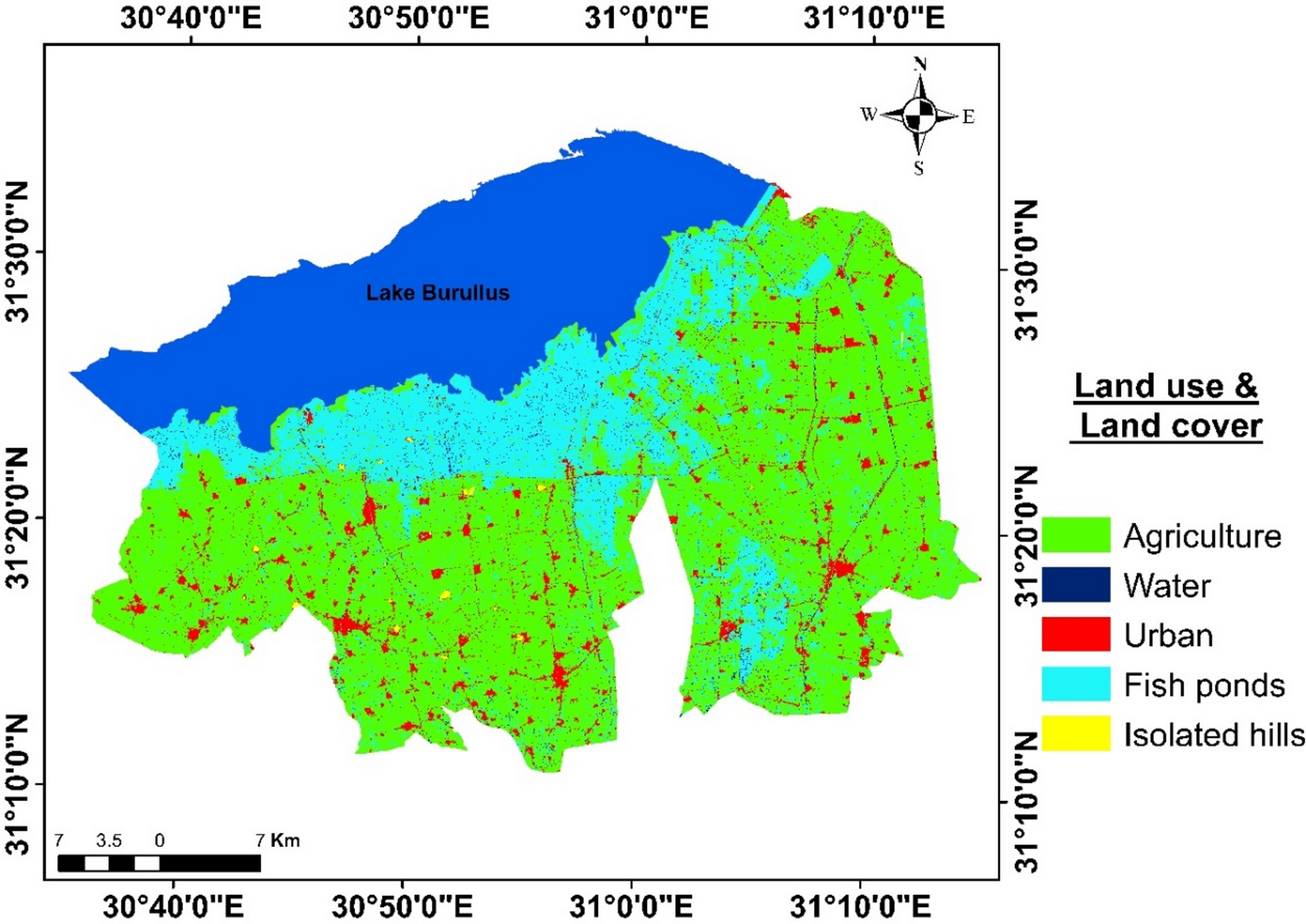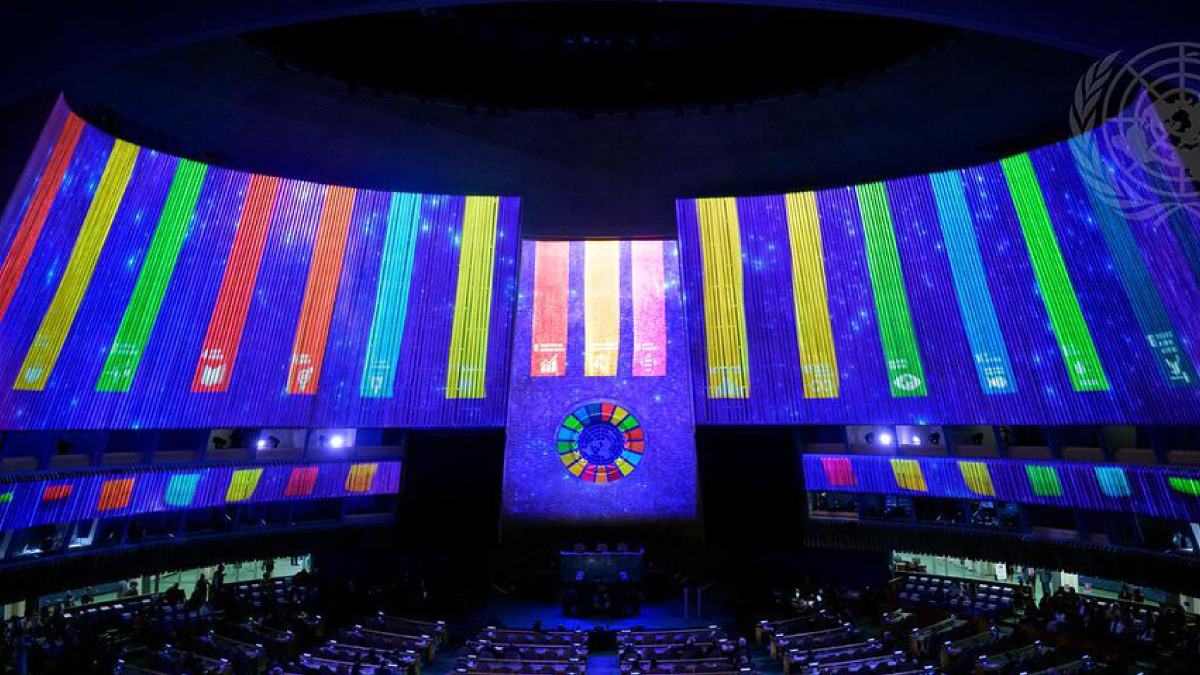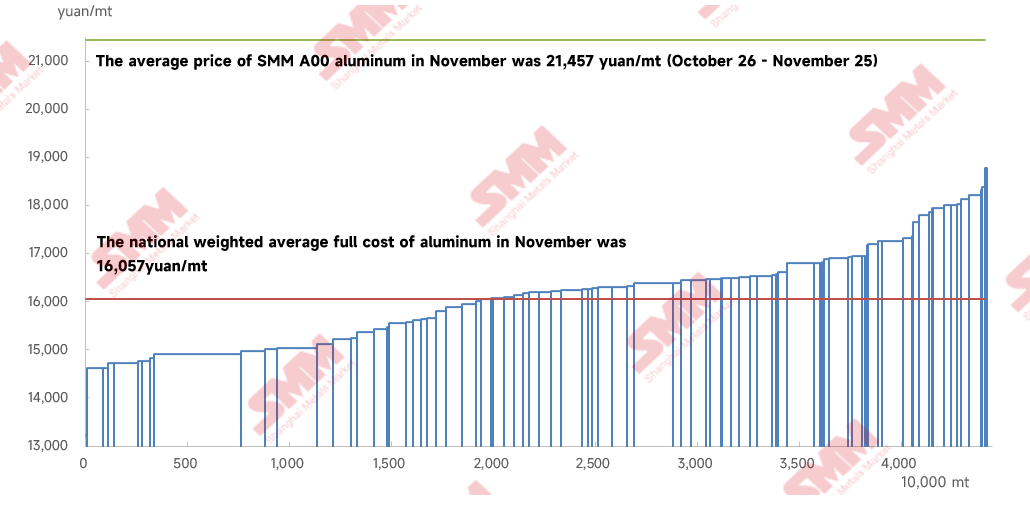Evaluating land degradation and environmental hazards in North delta Egypt using machine learning and GIS approaches – Nature

Executive Summary
This report details an integrated assessment of soil quality, land degradation, and ecological risks in Egypt’s Northern Nile Delta, framing the findings within the context of the United Nations Sustainable Development Goals (SDGs). Soil degradation presents a critical obstacle to achieving several SDGs, particularly in arid regions. This study utilized a combination of Geographic Information Systems (GIS), remote sensing, and machine learning (ML) models—including Artificial Neural Network (ANN), Random Forest (RF), and Decision Tree (DT)—to provide a comprehensive analysis. The primary forms of degradation identified were salinization, alkalization, compaction, and waterlogging, which directly impact SDG 15 (Life on Land) and SDG 2 (Zero Hunger). Soil quality assessment revealed that 90.61% of the area is of high quality, yet significant ecological risks persist. Geo-accumulation index (Igeo) analysis showed high to very high pollution levels for copper (Cu), lead (Pb), zinc (Zn), and uranium (U), threatening SDG 3 (Good Health and Well-being) and SDG 6 (Clean Water and Sanitation). All soil samples were classified as highly contaminated according to the Contamination Degree (CD), Potential Ecological Risk (PER), and Pollution Load Index (PLI). The ML models demonstrated high efficacy in predicting these pollution indices, with R² values consistently above 0.92. The ANN model was superior for CD prediction (R²=0.98), while the DT model excelled at predicting PLI (R²=0.99) and PER (R²=0.97). This study provides an innovative framework for monitoring soil health, offering actionable data to support evidence-based policies aimed at achieving sustainable land management and advancing the SDGs.
Introduction: Aligning Soil Health with Sustainable Development Goals
Land degradation is a global challenge that directly undermines progress toward multiple Sustainable Development Goals. It jeopardizes food security (SDG 2), threatens terrestrial ecosystems (SDG 15), and impacts the livelihoods of millions. In arid and semi-arid regions like Egypt, where agricultural activities are a cornerstone of the economy, the sustainable management of land and water resources is paramount. However, increasing population pressure and persistent land degradation threaten the nation’s ability to achieve sustainable agricultural development. This report evaluates soil degradation in the Northern Nile Delta, a region critical to Egypt’s food production, by assessing its physical, chemical, and biological health. The study focuses on:
- Evaluating soil quality and degradation status to inform strategies for SDG 15 (Life on Land), which aims to combat desertification and halt land degradation.
- Assessing soil pollution from trace elements, which has direct implications for SDG 3 (Good Health and Well-being) and SDG 6 (Clean Water and Sanitation) by affecting food safety and water quality.
- Analyzing the impact of agricultural practices on soil health, contributing to insights for SDG 12 (Responsible Consumption and Production).
- Utilizing advanced technologies to create cost-effective and efficient monitoring systems, supporting SDG 17 (Partnerships for the Goals) through innovative scientific collaboration.
Methodology: An Integrated Approach for SDG Monitoring
Study Area and SDG Context
The study was conducted in the Northern Nile Delta of Egypt, an area of approximately 1,050 km². This region is characterized by intensive agriculture, primarily rice and wheat cultivation, which relies heavily on fertilizers and irrigation. This context makes it a critical area for studying the interplay between agricultural productivity and environmental sustainability, directly relevant to SDG 2 and SDG 12. The proximity of industrial and urban centers adds to the risk of soil contamination, further emphasizing the need for monitoring to protect public health (SDG 3) and environmental integrity (SDG 15).
Data and Technology for Sustainable Assessment
To achieve a comprehensive assessment, this study employed an integrated technological approach consistent with advancing SDG 17. The methodology combined several data sources and analytical tools:
- Remote Sensing: Landsat ETM+ satellite imagery and a Digital Elevation Model (DEM) were used to generate a physiographic map and classify land use/cover. This provides a large-scale, cost-effective method for monitoring land changes over time.
- Geographic Information Systems (GIS): ArcGIS software was used for spatial analysis, data integration, and map production, allowing for the visualization of degradation and pollution hotspots.
- Machine Learning (ML): Python-based ML models, including Artificial Neural Network (ANN), Random Forest (RF), and Decision Tree (DT), were developed to predict soil pollution indices based on trace element concentrations. This data-driven approach enhances predictive accuracy for environmental monitoring.
Pollution and Degradation Indices
Several internationally recognized indices were calculated to quantify soil health and align with global environmental monitoring standards. These indices provide standardized metrics for assessing progress towards SDG targets related to pollution and land degradation.
- Soil Quality Index (SQI): Assesses the overall health and functionality of the soil based on physical properties.
- Biological Degradation Index (BDI): Measures the loss of organic matter, a key indicator of soil fertility and its capacity to support life (SDG 15).
- Geo-accumulation Index (Igeo): Evaluates heavy metal pollution by comparing current concentrations to pre-industrial levels.
- Contamination Factor (CF), Contamination Degree (CD), and Pollution Load Index (PLI): Quantify the level of contamination from various trace elements.
- Ecological Risk (ER) and Potential Ecological Risk (PER): Assess the potential adverse effects of toxic substances on the ecosystem.
Results: Assessing Progress Towards SDG Targets
Land Degradation Status and SDG 15
The assessment identified four primary types of human-induced soil degradation, which directly challenge the targets of SDG 15 (Life on Land).
- Salinization and Alkalinization: Most of the study area exhibited moderate salinity and alkalinity, often resulting from inadequate irrigation and drainage practices.
- Compaction: Moderate soil compaction was widespread, caused by the use of heavy machinery and intensive cultivation, which reduces water infiltration and harms soil structure.
- Waterlogging: Inefficient irrigation and poor drainage systems have led to moderate waterlogging in many areas, particularly in heavy clay soils.
- Biological Degradation: The Biological Degradation Index (BDI) revealed that over 85% of the area suffered from moderate to very high degradation, indicating a significant loss of soil organic matter, which is crucial for soil fertility and carbon sequestration (SDG 13).
Soil Quality and its Impact on SDG 2
The Soil Quality Index (SQI) provided a more optimistic outlook regarding the land’s productive capacity, which is fundamental to achieving SDG 2 (Zero Hunger). The results showed:
- High Quality: 90.61% of the studied soils were classified as high quality, characterized by good texture, sufficient depth, and adequate drainage. This indicates a strong potential for sustainable agricultural productivity if managed correctly.
- Moderate Quality: 9.39% of the area was categorized as moderate quality, primarily due to poor drainage and high groundwater levels near Lake Burullus.
Pollution Analysis and Implications for SDGs 3, 6, and 12
Despite high soil quality, significant heavy metal contamination poses a threat to environmental health and food safety, impacting SDG 3, SDG 6, and SDG 12.
- Geo-accumulation Index (Igeo): The Igeo values revealed severe contamination by Cadmium (Cd), a highly mobile and toxic element often associated with phosphate fertilizers. The levels of Cu, Pb, and Zn indicated a very high degree of pollution.
- Contamination Factor (CF): The CF values confirmed that the soils were highly contaminated with Cd, linking agricultural inputs directly to environmental pollution.
- Ecological Risk (PER): The Potential Ecological Risk index was high across all soil profiles, driven primarily by the high toxicity of Cd. This poses a significant risk to local ecosystems and potentially the human food chain.
Predictive Modeling Performance
The machine learning models proved highly effective for predicting key pollution indices, demonstrating their potential as tools for efficient and scalable environmental monitoring.
- Contamination Degree (CD) Prediction: The ANN model showed the best performance, with R² values of 0.98 during calibration and 0.95 during validation.
- Pollution Load Index (PLI) Prediction: The DT model was exceptionally accurate, achieving R² values of 0.99 (calibration) and 0.97 (validation).
- Potential Ecological Risk (PER) Prediction: The DT model also demonstrated strong predictive accuracy for PER, with R² values of 0.97 (calibration) and 0.95 (validation).
Conclusion: Advancing SDGs through Integrated Soil Assessment
This study successfully demonstrates that an integrated approach combining GIS, remote sensing, and machine learning provides a powerful framework for evaluating land degradation and environmental hazards in the context of the Sustainable Development Goals. The findings highlight a critical duality in the Northern Nile Delta: while the intrinsic soil quality remains high, anthropogenic pressures from intensive agriculture have led to significant degradation and heavy metal pollution, particularly from cadmium. This situation directly threatens the achievement of SDG 2 (Zero Hunger), SDG 3 (Good Health and Well-being), SDG 12 (Responsible Consumption and Production), and SDG 15 (Life on Land).
The high accuracy of the machine learning models in predicting pollution indices offers a pathway for developing robust, data-driven monitoring systems. Such systems can empower policymakers and land managers with the timely information needed to implement targeted interventions, promote sustainable agricultural practices, and mitigate ecological risks. By leveraging these advanced technologies, stakeholders in Egypt and other arid regions can make more informed decisions to conserve soil resources, ensure food security, and make tangible progress toward the 2030 Agenda for Sustainable Development.
Analysis of Sustainable Development Goals in the Article
1. Which SDGs are addressed or connected to the issues highlighted in the article?
The article on soil degradation, pollution, and quality assessment in the Northern Nile Delta of Egypt connects to several Sustainable Development Goals (SDGs). The primary focus on agricultural land, food production, environmental health, and land ecosystems makes the following SDGs particularly relevant:
-
SDG 2: Zero Hunger
This goal is directly addressed as the article states that “Land degradation represents a major threat to food security, livelihood sustainability, ecosystem services, and biodiversity conservation.” The study’s focus on soil quality, fertility, and productivity is crucial for achieving sustainable agriculture, which is a cornerstone of SDG 2. The article emphasizes that effective management of land is “essential for ensuring food security and achieving sustainable agricultural development.”
-
SDG 3: Good Health and Well-being
The extensive analysis of soil pollution with heavy metals and trace elements links directly to SDG 3. The article evaluates “ecological risks” and measures the concentration of toxic elements like Cadmium (Cd), Lead (Pb), and Arsenic (As). These pollutants can enter the food chain and impact human health, aligning with the goal of reducing illnesses and deaths from soil contamination.
-
SDG 6: Clean Water and Sanitation
Although not the primary focus, SDG 6 is relevant. The article identifies “waterlogging” as a form of soil degradation and mentions issues like “rising water tables” and “difficulties in maintaining drainage systems.” Soil pollution by heavy metals can also lead to the contamination of groundwater and surface water resources, impacting water quality, which is a key aspect of this goal.
-
SDG 12: Responsible Consumption and Production
This goal is connected through the article’s discussion of the sources of soil pollution. The study mentions that contamination can be attributed to “excessive use of fertilizers,” particularly “superphosphate fertilizers,” which are a source of Cadmium. This points to the need for environmentally sound management of chemicals in agriculture, a key component of SDG 12.
-
SDG 15: Life on Land
This is one of the most central SDGs to the article. The entire study is framed around evaluating and mitigating “soil degradation,” which is a direct threat to terrestrial ecosystems. The article aims to “rehabilitate and restore soil functionality” and assesses various forms of degradation, including salinization, compaction, and loss of biological health. This aligns perfectly with the objective of protecting, restoring, and promoting the sustainable use of terrestrial ecosystems.
2. What specific targets under those SDGs can be identified based on the article’s content?
Based on the issues discussed, several specific SDG targets can be identified:
-
Target 2.4
“By 2030, ensure sustainable food production systems and implement resilient agricultural practices that increase productivity and production, that help maintain ecosystems, and that progressively improve land and soil quality.”
The article’s core objective is to evaluate soil quality and degradation to inform sustainable management. By assessing the Soil Quality Index (SQI) and identifying factors like compaction and salinization, the study provides the foundational data needed to improve land and soil quality for sustainable agriculture.
-
Target 3.9
“By 2030, substantially reduce the number of deaths and illnesses from hazardous chemicals and air, water and soil pollution and contamination.”
The research directly supports this target by quantifying soil pollution. The article measures the concentration of various “trace elements” and “heavy metals” (As, Cd, Pb, etc.) and uses indices like the Potential Ecological Risk (PER) to assess the hazards posed by this contamination.
-
Target 6.3
“By 2020, improve water quality by reducing pollution, eliminating dumping and minimizing release of hazardous chemicals and materials…”
The identification of soil contamination by heavy metals from sources like fertilizers implies a risk to water quality through runoff and leaching. Furthermore, the mention of “waterlogging” and poor drainage highlights issues in water management that affect both soil and water resources, connecting the study’s findings to this target.
-
Target 12.4
“By 2020, achieve the environmentally sound management of chemicals and all wastes throughout their life cycle…and significantly reduce their release to…soil in order to minimize their adverse impacts on human health and the environment.”
The article links high levels of Cadmium (Cd) contamination to the “excessive uses of superphosphate fertilizers.” This finding underscores the importance of managing agricultural chemicals responsibly to prevent soil pollution, which is the central aim of this target.
-
Target 15.3
“By 2030, combat desertification, restore degraded land and soil, including land affected by desertification, drought and floods, and strive to achieve a land degradation-neutral world.”
This target is explicitly addressed. The study’s purpose is to “evaluate the soil quality, land degradation, and ecological risks” to develop strategies to “rehabilitate and restore soil functionality.” It identifies and maps various forms of soil degradation, such as “salinization, alkalization, compaction, and waterlogging,” providing a direct assessment of the state of land degradation.
3. Are there any indicators mentioned or implied in the article that can be used to measure progress towards the identified targets?
Yes, the article is rich with specific, quantifiable indicators that can be used to measure progress towards the identified targets. These are primarily the various indices calculated to assess soil health and pollution levels.
-
Indicators for Land and Soil Quality (Targets 2.4 and 15.3)
- Soil Quality Index (SQI): The article calculates the SQI based on factors like texture, depth, drainage, and slope. It quantifies that “90.61% of the study area was classified as high quality, whereas 9.39% was categorized as moderate quality.” This index serves as a direct measure of soil health and its suitability for sustainable agriculture.
- Biological Degradation Index (BDI): Calculated based on organic matter content, the BDI is used to assess the biological health of the soil. The article provides a spatial analysis of BDI levels (moderate, high, very high), which is a key indicator of soil degradation.
- Measures of Physical Degradation: The study identifies and maps areas affected by “compaction,” “salinization,” “alkalization,” and “waterlogging.” The extent and severity of these phenomena are direct indicators of land degradation.
-
Indicators for Soil Pollution and Chemical Contamination (Targets 3.9 and 12.4)
- Geo-accumulation Index (Igeo): This index is used to assess the level of contamination by heavy metals. The article provides specific results, stating that samples showed “pollution levels (Igeo geo
- Contamination Factor (CF), Pollution Load Index (PLI), and Contamination Degree (CD): These indices are explicitly calculated to provide a “comprehensive evaluation of the contamination degree.” The article notes that “all tested soil samples were found to be highly contaminated by the analyzed elements” based on these indices.
- Potential Ecological Risk (PER): This indicator is used to assess the toxicity and ecological risk posed by trace metals, with the article highlighting a “high ecological risk of cadmium.”
- Concentration of Trace Elements: The measurement of specific concentrations of elements like Cd, Pb, Cu, Zn, etc., in soil samples is the foundational data for all pollution indices and serves as a primary indicator of contamination.
4. Table of SDGs, Targets, and Indicators
| SDGs | Targets | Indicators Identified in the Article |
|---|---|---|
| SDG 2: Zero Hunger | 2.4: Ensure sustainable food production systems and progressively improve land and soil quality. |
|
| SDG 3: Good Health and Well-being | 3.9: Substantially reduce illnesses from hazardous chemicals and soil pollution. |
|
| SDG 6: Clean Water and Sanitation | 6.3: Improve water quality by reducing pollution from hazardous chemicals. |
|
| SDG 12: Responsible Consumption and Production | 12.4: Achieve environmentally sound management of chemicals and reduce their release to soil. |
|
| SDG 15: Life on Land | 15.3: Combat desertification and restore degraded land and soil. |
|
Source: nature.com
What is Your Reaction?
 Like
0
Like
0
 Dislike
0
Dislike
0
 Love
0
Love
0
 Funny
0
Funny
0
 Angry
0
Angry
0
 Sad
0
Sad
0
 Wow
0
Wow
0



















































.jpg.webp?itok=0ZsAnae9#)
























